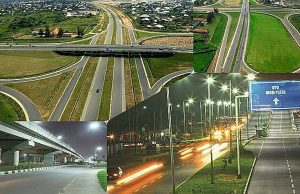Differences between a town and a village: Most people reside in cities and villages. Many individuals still enjoy the tranquility of rural living, even though some may choose to live in towns and other metropolitan regions. Towns and villages are slower paced, less dirty, and have a lower population density than cities. While villages and cities share a similar rural location and enjoy comparatively cleaner and fresher air, they differ from one another in a few key ways.
It’s critical to recognize the distinction between towns and villages while considering tiny settlements. We shall examine the distinctions between a town and a village in this post.

Recommended: Best Female DJs in Nigeria
Six Differences between a town and a village
1. Size and Population
Town: Towns are defined by their greater physical area and density of inhabitants. Towns can range widely in size from little villages to more expansive metropolis areas. A few examples of the variables that affect population density include the degree of urbanization generally, employment prospects, and commercial activity. Towns have a higher population density and more diversified social life due to the wide range of origins and interests held by its citizens. Towns frequently draw people looking for employment, educational possibilities, and a more international way of life.

Village: In comparison, villages are denserly populated and have a smaller physical area. They usually comprise small, tightly-knit villages with a small population. The villages’ intimate social ties and feeling of familiarity are fostered by their tiny size. A more uniform population with shared cultural customs and behaviors is a frequent characteristic of villages.
2. Administration and Governance
Town: Towns provide specialized municipal services, municipal councils, and a more organized administrative system. Typically, the governance system is more organized, with different parts of town management being overseen by elected officials. Zoning laws, methodical urban planning, and the delivery of basic services are made possible by this institutional government.
Council-manager or mayor-council systems of governance are possible in towns, depending on the regional administrative structure. Residents of the town are guaranteed access to well-organized public services and an understandable decision-making process thanks to this structured government.

Village: Villages frequently feature more community-focused government and a more straightforward administrative organization. Informal leadership positions are possible, with village chiefs or community elders playing important roles in decision-making. Villages often have a more decentralized system of government, with community consensus being used to make decisions. Villages may not have official local councils, and village life may incorporate administrative duties. A feeling of shared decision-making and collaborative accountability is fostered by this community-based government.
Recommended: States With The Highest HIV Rate In Nigeria
3. Economic Activities
Town: Towns are hubs for the economy, housing a variety of business, industrial, and service industries. Towns are known for their diverse business environments, which range from tiny neighborhood stores to major companies. Towns are frequently centers of trade, business, and job possibilities, drawing workers from nearby communities as well as from outside. Towns’ resilience and vibrancy are enhanced by their economic diversification, which allows them to adjust to shifting consumer needs and market trends. Diverse enterprises and sectors promote economic development and progress.
Village: The main economic activity in villages are usually small-scale local enterprises, traditional crafts, and agriculture. A village’s economy is often based on its agricultural activities, as farming is a vital source of income for the locals. Village economies are frequently strongly correlated with the natural resources found in the surrounding areas. Local trade, artisanal manufacturing, and traditional crafts might augment agricultural revenue. A subsistence economy, in which the community’s fundamental necessities are the main priority, can also exist in a village.

Recommended: Best Books for Science Students
4. Infrastructure and Services
Town: Villages lack the advanced infrastructure that towns have. This entails improved public services, paved roads, cutting-edge medical facilities, and educational establishments. Because the infrastructure is built to accommodate a bigger and more diversified population, people may be certain of its accessibility and convenience.
Towns frequently have clinics, hospitals, and specialty medical services among their healthcare facilities. Towns can include everything from elementary schools to colleges, offering a wide variety of educational options. The town’s and its surrounding areas’ effective connection is facilitated by paved roads and transit networks.
Village: Conversely, villages could have little infrastructure. In villages, there might not be as many transit alternatives and muddy roads. Smaller clinics or health centers tend to the community’s main healthcare requirements, making healthcare facilities typically more subdued. Primary and secondary schools are among the educational facilities found in villages; higher education facilities are usually found in towns or cities.
The availability and quality of basic utilities like power, water supply, and sanitation might differ, and certain communities may have trouble getting these necessities. But the simplicity of village life frequently revolves around a more independent and communal way of living.

Recommended: Most Beautiful Countries In The World
5. Lifestyle and Culture
Town: Towns often provide a more wide range of cultural influences and a more cosmopolitan lifestyle. There are more cultural practices, languages, and customs as a result of the growing population and greater social diversity. Towns frequently transform into cultural melting pots when they draw people from a variety of origins and promote cross-cultural interaction. Towns provide a vibrant, fast-paced lifestyle that includes a wide variety of cultural events, cuisines, and entertainment alternatives. Towns’ multiculturalism fosters a more progressive and contemporary attitude on life by embracing a variety of viewpoints and lifestyles.
Village: In villages, people tend to be more alike, and customs and a strong feeling of community frequently shape the way of life. Villages have a common set of customs, traditions, and intimate interpersonal ties that define their cultural fabric. Villagers frequently preserve and transmit traditional knowledge, keeping a link to their cultural origins. Village life is often slower paced and centered on events that benefit the community. Festivals and other cultural events are important because they strengthen the ties that bind the community together. Village lifestyles tend to be more traditional and conservative, with a strong foundation in local customs.

Recommended: Best Lawyers In The World 2024 (With Pictures): Top 12 Most Popular
6. Access to Resources
Town: Villages lack the advanced infrastructure that towns have. This entails improved public services, paved roads, cutting-edge medical facilities, and educational establishments. Because the infrastructure is built to accommodate a bigger and more diversified population, people may be certain of its accessibility and convenience.
Towns frequently have clinics, hospitals, and specialty medical services among their healthcare facilities. Towns can include everything from elementary schools to colleges, offering a wide variety of educational options. The town’s and its surrounding areas’ effective connection is facilitated by paved roads and transit networks.
Village: Conversely, villages could have little infrastructure. In villages, there might not be as many transit alternatives and muddy roads. Smaller clinics or health centers tend to the community’s main healthcare requirements, making healthcare facilities typically more subdued. Primary and secondary schools are among the educational facilities found in villages; higher education facilities are usually found in towns or cities. The availability and quality of basic utilities like power, water supply, and sanitation might differ, and certain communities may have trouble getting these necessities. But the simplicity of village life frequently revolves around a more independent and communal way of living.
Recommended: Best Police Force In The World
Conclusion
The primary difference between the two is size. A town is a bigger administrative entity than a hamlet, which is among the smallest. Several prosperous villages have grown into cities and incorporated neighboring villages as they have grown. The exact numbers that characterize each of these two categories of settlements vary depending on the administrative practices and growth trajectory of each nation.

Edeh Samuel Chukwuemeka, ACMC, is a lawyer and a certified mediator/conciliator in Nigeria. He is also a developer with knowledge in various programming languages. Samuel is determined to leverage his skills in technology, SEO, and legal practice to revolutionize the legal profession worldwide by creating web and mobile applications that simplify legal research. Sam is also passionate about educating and providing valuable information to people.